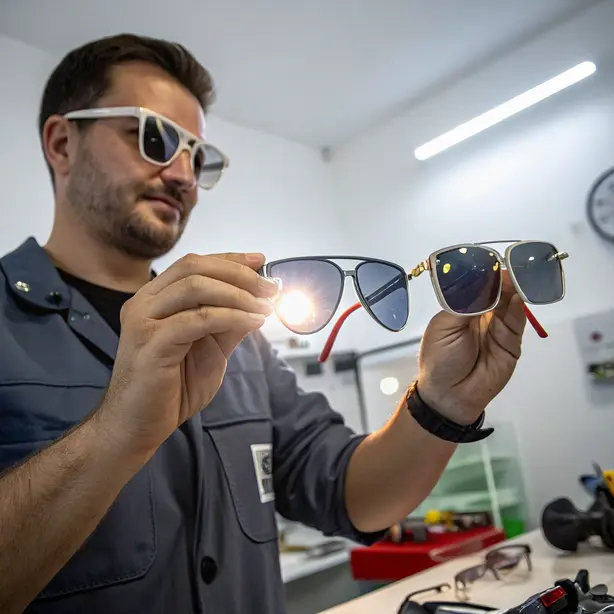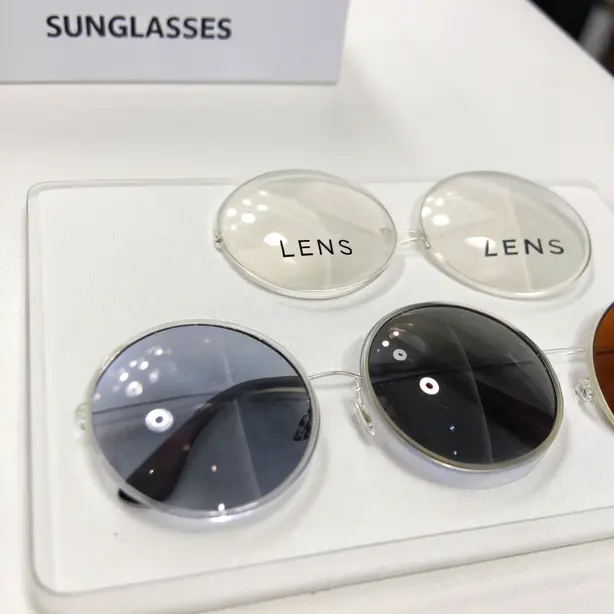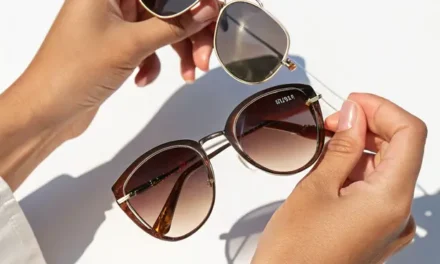Importance of choosing lens materials
When it comes to sunglasses, choosing lens materials is a critical factor that can affect not only the eyeglasses’ durability but also their performance in different environments. Your choice often boils down to options like polycarbonate, glass, or even newer, advanced materials. Each material has distinct advantages and disadvantages that can make the selection process somewhat complex.
Polycarbonate and glass are two popular choices, offering contrasting benefits to the wearer. Polycarbonate is lightweight and highly durable, making it perfect for active lifestyles and situations where the sunglasses might be exposed to physical stress. On the other hand, glass is known for its superior optical clarity, providing a pristine viewing experience with less distortion. This raises the question of durability vs clarity, a crucial aspect when considering sunglass material comparison.
In the decision-making process, it’s essential to weigh how the material will meet your specific needs. If impact resistance and weight are priorities, polycarbonate might be your material of choice. However, if visual clarity and scratch resistance are more important, you might lean toward glass lenses. Ultimately, understanding these differences is vital when choosing lens materials.
Polycarbonate vs. Glass: A Matter of Durability vs Clarity
The debate between polycarbonate vs glass is often framed as a clash between durability and clarity. Polycarbonate is known for its toughness. It’s a popular choice for sports and safety applications due to its impact resistance, making it less likely to shatter compared to glass. This makes it ideal for children’s eyewear or for individuals with an active lifestyle.
Glass, however, offers unmatched clarity. It provides wearers with less optical distortion, bringing out vibrant colors and details more vividly. For those who prioritize visual excellence, glass lenses are often considered the gold standard, though they come with the downside of being more vulnerable to impact damage and typically heavier than their polycarbonate counterparts.
The decision between these two materials boils down to personal preferences and lifestyle needs. If you find yourself outdoors frequently and require lenses that stand up to wear and tear, polycarbonate would be the preferred choice. On the contrary, if your focus is on securing optimal visual clarity, then glass ought to be your pick when choosing lens materials.
Durability vs Clarity: Which One Matters Most?
When considering sunglass material comparison, another question that emerges is the trade-off between durability vs clarity. Polycarbonate offers superior toughness, making it a popular option for many. It’s impact resistant and can withstand the occasional accidental drop or mishap, which makes it great for high-intensity sports activities or a more structured lifestyle.
On the other hand, glass excels in clarity. It offers higher resistance to minor scratches compared to polycarbonate and delivers crisp optics, enhancing the viewing experience. For professional uses, such as sailing or mountaineering, where environmental conditions demand uncompromised visual precision, glass could very well be unbeatable.
The choice between durability and clarity is not merely a personal preference but also about understanding your lifestyle and any specific conditions where you’ll be using these glasses. Each decision in choosing lens materials should aptly reflect your individual needs and situational demands.
A Sunglass Material Comparison
Before settling on a purchase, many consumers conduct a sunglass material comparison to help decide between polycarbonate vs glass and other lesser-known materials. This comparison typically starts with evaluating lifestyle needs alongside the conditions in which these sunglasses will be used.
People who need a balance between flexibility and optical performance often find polycarbonate to be sufficient. The material is perfect for everyday use, combining decent optical clarity with substantial durability to resist any potential damage from active use. However, for those who value image quality above all and don’t mind some extra weight, glass offers superior clarity, rendering images and colors in their truest forms.
Deciding on the best lens material does not have to be confusing. You need to consider factors such as UV protection and compatibility with prescription lenses, which can further tip the scale towards one material over the other. A thorough comparison is essential for anyone serious about choosing lens materials.

Changing Perspectives: Why Many Are Opting for Polycarbonate
Understanding the dynamics of practical use is crucial in a sunglass material comparison between polycarbonate vs glass. More and more individuals are turning to polycarbonate for its impressive features. With increased outdoor activities requiring tough lenses, this trend mirrors the growing demand for safety and convenience.
Polycarbonate’s strength lies in its ability to resist significant impact without cracking or shattering, which is a huge advantage in active environments. The advent of advanced coatings has improved its scratch resistance, compensating somewhat for one of its traditional downsides compared to glass.
So why are many changing their perspective? The inclusion of progressive coatings and developments in manufacturing have significantly improved the optical clarity of polycarbonate lenses, effectively minimizing the gap with glass. As users become more informed, the choice between durability vs clarity is swaying them towards polycarbonate, an educated decision in choosing lens materials.
Environmental Considerations When Choosing Lens Materials
In today’s environmentally-conscious world, another factor that influences choosing lens materials is the environmental impact. Lens production, regardless of material, involves energy and resources, making sustainability an additional consideration for eco-conscious consumers.
Polycarbonate is often made from petroleum-based raw materials, which adds to its environmental footprint. However, the longer life expectancy given polycarbonate’s durability means fewer replacements, which can balance out its initial impact. Recycling programs are increasingly popular, accommodating both polycarbonate and glass lens materials to ensure sustainable practices.
On the flip side, glass lenses are made from naturally occurring materials like silica but require more energy in manufacturing and processing, partly because they are heavier and more brittle. Deciding on the right material should involve weighing these environmental aspects actively, alongside other factors like performance and user needs, to comprehensively understand the implications of choosing lens materials.
The Future of Sunglass Materials: What’s on the Horizon?
The future of choosing lens materials promises exciting developments that could tilt the balance in the polycarbonate vs glass debate. Researchers and manufacturers are continually innovating, and newer materials with advanced features are making a splash.
Emerging materials such as Trivex provide an intriguing alternative with characteristics that blend the strengths of both polycarbonate and glass. Trivex is lightweight, durable, and offers high optical precision, challenging the existing notions confined within traditional materials. This innovation signifies an ever-evolving field and encourages consumers to stay updated with potential game-changers in the lens industry.
With technology racing ahead, the horizon for sunglass materials is full of opportunities. As we witness these changes unfold, the ability to adapt and choose wisely could not be more crucial. Each advancement in manufacturing and material science offers a glimpse into more sustainable, efficient, and visually satisfying products, aligning with future needs for choosing lens materials.





